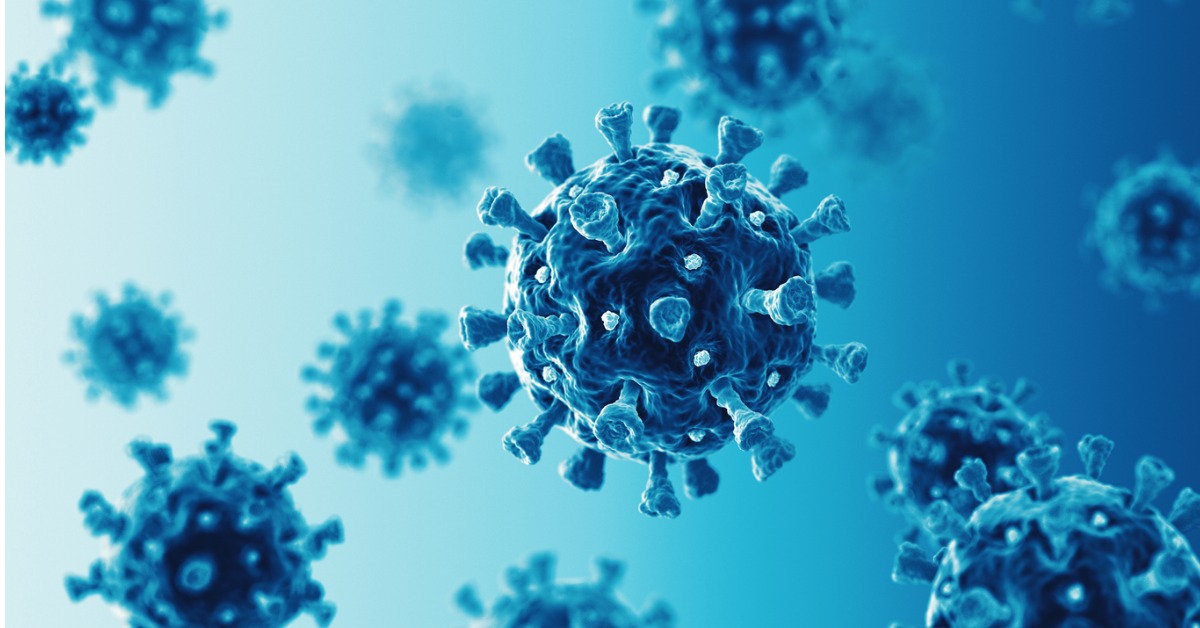
It’s rarely been disputed that coronavirus can spread through infected surfaces, so we’re told to wash our hands regularly and clean high touch surfaces. Countries around the world have public health messages about clean hands. We’ve also been told that COVID-19 is not likely to be spread through food or drinks.
But since the start of the pandemic, health experts have questioned whether you’re at risk of being infected by coronavirus particles through airborne transmission. It took 13 months and numerous studies before the World Health Organisation (WHO) recognised that COVID-19 is airborne. Here we look at what is known about aerosol transmission and how you can reduce the risks.
What is Airborne Transmission of Coronavirus?
Similar to other respiratory viruses, COVID-19 is transmitted by respiratory droplets which are spread from an infected person to others mainly while talking, shouting, singing, coughing or sneezing.
The virus is more likely to spread ‘in poorly ventilated and/or crowded indoor settings, where people tend to spend longer periods of time.’
Evidence of Airborne Transmission
In recent months, it has become clear that airborne transmission definitely occurs and it’s not just respiratory droplets that are to blame. In hotel quarantine sites, a small number of returned travellers who don’t have any contact with each other or infected surfaces have contracted the virus while staying in their rooms. Genomic testing has proved the virus is being passed from one room to another through contaminated air escaping the room.
There’s proof that COVID-19 particles are evident in bodily fluids in addition to respiratory droplets. Health authorities around Australia are monitoring sewage for coronavirus fragments. An infected (or recovered) person sheds the virus through bodily waste which can be detected in wastewater plants and alerts authorities to otherwise undetected cases of COVID-19 in the community.
Excreta can also be aerosolized through toilet flushing and the material deposited onto surfaces can be re-aerosolized by activities such as walking, cleaning a room, and door opening.
Worryingly, the risk isn’t confined to the people living in the same premises as the infected toilet. Studies have shown the risk can spread from one dwelling to another through plumbing. One study in China found evidence of coronavirus particles in the bathrooms of unoccupied apartments. It proved the virus had spread through tiny airborne particles generated by the force of a toilet flush and spread by wastewater pipes from other apartments housing infected occupants.
These studies have highlighted the increased risk to hospital patients. When a COVID-19 patient is admitted, they are likely excreting high concentrations of the virus in their feces and urine. When the toilet is flushed, the plume of small airborne particles can travel through the drain pipes from an infected patient’s room to an uninfected, immune-compromised patient who is then infected.
What Can You Do to Avoid Airborne Transmission?
Airborne transmission of virus makes it more infectious and capable of infecting more people than surface only transmission. Find out what you can do to avoid infection through airborne particles of COVID-19.
Green Drain
The only way of ensuring airborne transmission doesn’t occur between hospital rooms is to install a mechanical barrier on drains. The clinical version of Green Drain is easily retrofitted to drains to stop deadly infectious diseases including COVID-19 and Hospital Acquired Infections (HAIs) moving around the hospital through drain pipes.
Wear a Mask
A cough can produce approximately 3,000 respiratory droplets while a sneeze releases about 40,000 droplets, so a mask can stop these droplets from being inhaled or landing on your face.
When there’s an outbreak, if everyone in the community wears a mask and maintains social distancing, the risk of infection is greatly reduced.
Limit Contact with Crowds
Avoiding crowded settings (particularly indoors) where you can’t social distance at 1.5 metres will reduce your risk of contracting respiratory infections. Limiting the number of people you pass in close proximity will mean you’re less likely to come in contact with an infected person.
Choose Outdoor Settings Over Indoors
While being outdoors doesn’t offer full protection, it offers some reduction of risk compared to being indoors. Choosing a table outside the cafe rather than inside or exercising outside rather than at a gym means you aren’t breathing indoor air. Being outdoors the virus particles are more likely to be blown away from you and have a shorter lifespan.
Keep up Surface Cleaning
Airborne particles of coronavirus don’t stay airborne for long. The infected particles land on surfaces. If you touch an infected surface, the virus can transfer to their hand and potentially enter the body through their eyes, nose or mouth. A clinical disinfectant like Chlor-Clean is required in hospital and aged care settings to ensure the environment is effectively disinfected.
More Information
If you’d like to know about how Green Drain can work in your setting or hospital grade cleaning products, call us on 1300 29 32 32 or
contact us online.